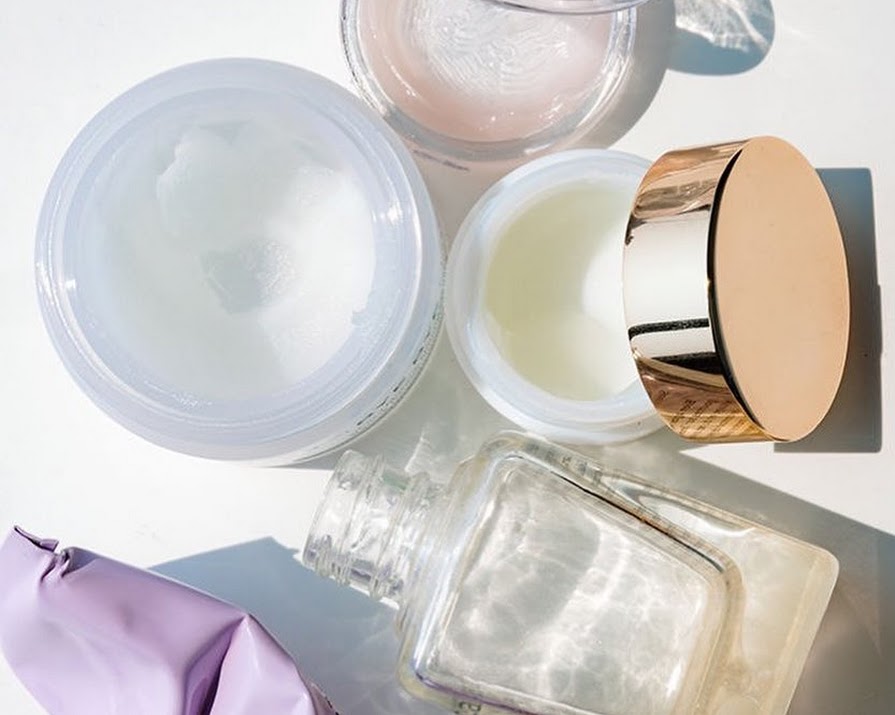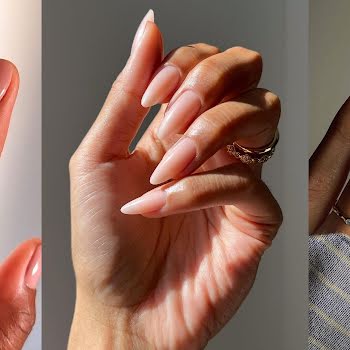By Holly O'Neill
21st Mar 2020
21st Mar 2020
Everyone’s talking about lactic acid – but what the hell is it? We asked skincare expert Jennifer Rock for the low-down
Jennifer Rock (AKA the Skin Nerd) breaks down the skincare ingredient lactic acid:
Where does it come from?
Cleopatra knew what she was at when she luxuriously bathed in milk as it is one of the things you’ll find lactic acid in. Interestingly, it’s also found throughout us and is often erroneously thought to be the reason behind muscle soreness post-workout. The lactic acid that we commonly find in skincare nowadays is thankfully neither from milk nor from muscles but synthetically produced in labs.
Is it known other any other names?
Strict lactic acid is only known as lactic acid, but you may see its salts in skincare occasionally, namely sodium lactate.
What’s it used for? What’s the main benefit of using it?
Lactic acid is an AHA (aka an alpha-hydroxy acid), a skincare ingredient that works to speed up our skin’s own process of exfoliation (known as proliferation or desquamation). You may think that you’d like to hang on to all of those skin cells at the top of your skin but you certainly do not, thank you very much, as they are dead and are possibly making your skin appear dull and contributing to congestion.
As far as acid exfoliants go, lactic acid is very powerful yet more gentle than glycolic acid, as it has a larger molecule and thus penetrates into the skin in a much more controlled manner. Imagine the difference between dropping a ping-pong ball versus a tennis ball down a tube – the ping-pong ball may travel faster but will act a bit irrationally on its way down, whereas the tennis ball will be more stable and predictable in its movement but may get there slower. Lactic acid is the tennis ball in this scenario.
Because of this, lactic acid is more suitable for sensitive or reactive skin types than glycolic acid. Additionally, it’s a humectant meaning that it draws moisture towards it, hydrating the skin and it boosts the production of ceramides in the skin, key lipids that make up your skin’s protective barrier.
How does it work in the skin?
Unlike mechanical exfoliants such as scrubs, grits and brushes, lactic acid and other exfoliating acids penetrate into the skin, gently dissolving the “glue” that binds dead skin cells to each other and the skin. Mechanical exfoliation is a short-term, gung-ho approach to exfoliation that can result in surface damage to the skin. Chemical exfoliation, when carried out correctly and with proper education, is the real MVP.
Who should use it?
Lactic acid is particularly beneficial for those who are newer to acids due to that slightly larger molecular size and is definitely the one to go for if you are prone to dry or dehydrated skin. It’s fantastic for uneven skin tone and pigmentation, whether “sun spots”/”age spots” or marks after spots, as well as mature skin and ageing skin. Additionally, it’s fab for those who suffer from congestion (ie. blackheads, spots and any lumps and bumps), specifically when used in conjunction with salicylic acid, an exfoliating acid that dissolves debris and dead skin cells within the pore to oust spots.
Should anyone not use it?
Those with highly reactive skin should always be wary when it comes to any exfoliating acid. I wouldn’t say outright to not use it but they should certainly be careful, patch test it and keep usage very low, as in once a week and for a short amount of time, until they’re sure that their skin is up for it. Lactic acid is considered to be safe for use during pregnancy too – wehoo!
Where do it come in your skincare routine?
I’m partial to an exfoliating cleanser and in my opinion, your exfoliant should be coming after you’ve thoroughly cleansed your skin in anyway. Pre-cleanse with the Cleanse Off Mitt® and massage your lactic acid cleanser onto your face for about a minute and wash it off. This means that your skin will be prepared to accept all of the other lovely, skin-beneficial active ingredients you will be applying after, such as your vitamin A serum.
Is there anything it shouldn’t be mixed with?
It’s not that there is anything in particular that lactic acid shouldn’t be mixed with – it’s more-so to be careful about overuse and overuse of acids and chemical exfoliants in general. Although lactic acid can help to strengthen your barrier due to how it boosts ceramide production when it is used correctly, it can have the opposite effect when you use it too often, stripping the skin of its essential protection. If you already use something with a high amount of glycolic acid, retinol, salicylic acid or another exfoliating acid twice or three times a week, you should be swapping, not adding. Listen to your skin and if it starts to feel rough, scaly or sandpapery, you’ve over-exfoliated, kiddo. Time to cut back.
Is there anything to look out for when shopping for it?
Potency! For a super effective lactic acid, you’re looking for a product that contains 10% lactic acid. A big ask? Perhaps, but if it is the exfoliation you’re looking for, you need that potency. If lactic acid is number 73 on the ingredients list on the back of the product, be a bit sceptical.
IMAGE Top Picks

Gallinee Foaming Facial Cleanser, €16 from gallinee.com
What is it?
A gentle, daily, soap-free foaming cleanser that protects the skin’s microbiome and doesn’t feel drying.
What’s in it?
Prebiotics feed the good bacteria in the skin while protecting against the bad, lactic acid matches the skin’s optimal pH. It’s also worth noting what isn’t in it, namely colourants, SLS, parabens, mineral oils, silicones, microbeads, phenoxyethanol or methylisothiazolinone.

What is it?
A high strength formula to be applied at night and can be diluted with other treatments to reduce the strength until you build a tolerance.
What’s in it?
There is 10% lactic acid with a pH of approximately 3.8 and Tasmanian pepperberry to reduce irritation and inflammation. This serum is also available in a 5% formula here.

Elequra Intense Restore Mask, €61.93, available at Arnotts
What is it?
An at-home treatment mask and resurfacing treatment to be used every 7-10 days for gentle exfoliation, fine line reduction and brightening.
What’s in it?
Pure pomegranate juice, lactic acid and papain enzymes, based off Elequra’s popular professional peel product.
Featured image by @intothegloss.
Read more: How I sorted my keratosis pilaris so I could bare my arms in my wedding dress
Read more: How to handle a keratosis pilaris flare-up (and quickly)
Read more: The dermatologist’s guide to salicylic acid























